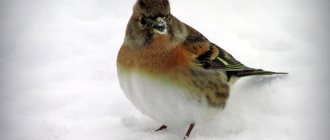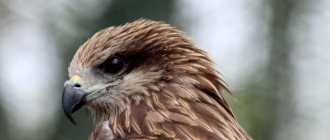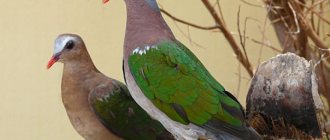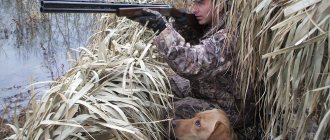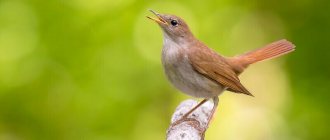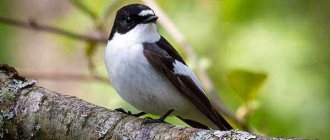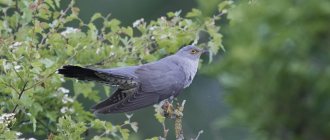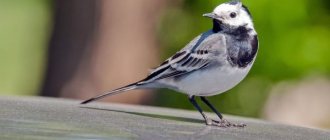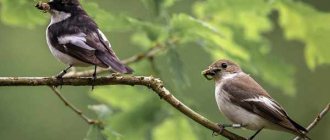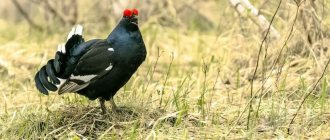- Wild animals
- >>
- Birds
Many have not even heard of such a small bird as linnet . And she has an extraordinary singing talent, the linnet composes melodic roulades that caress the ear, in which one can distinguish a trill similar to a nightingale, and the ringing song of a lark, and the chirping of a tit. Let's try to find out in more detail about the character of this bird, its places of permanent residence, habits and, of course, external features and characteristics.
Origin of the species and description
Photo: Konoplyanka
The linnet is also called the linnet; it is a small songbird belonging to the order Passeriformes, the family of finches and the genus of goldfinches. This family is one of the most widespread and numerous among songbirds. Basically, most of its members are small or medium in size. The passerine order can also be called the most numerous, because it has more than five thousand bird species.
Video: Konoplyanka
Linnet got its name due to the fact that it often eats the seeds of this plant. The bird was nicknamed Repolov for the same reason, because its diet also contains burdock seeds. The linnet is very miniature, the length of its body ranges from 13 to 16 cm. In mature individuals, the wingspan can reach from 23 to 26 cm, and the weight of the bird is about 22 grams. Among passerines, this bird can be considered a real Thumbelina.
It should be noted that male linnets are distinguished from females by the color of their plumage. In males it is much brighter and more extravagant during the mating season. The color of their costume has a reddish tint, which is not observed in females. Apparently, males need brightness to attract female attention during the wedding bird season, because the gentleman is obliged to make a lasting positive impression on the lady.
The closest relatives of linnets are:
- spruce crossbills;
- greenfinches;
- finches;
- canary finches.
There is a conditional division of linnets into three subspecies; ornithologists distinguish:
- common linnet, characterized by all the typical external features that will be described in detail below;
- Turkestan linnet, which is distinguished by a bright brown back; the red shades of males are much richer and more extensively distributed throughout the body, extending into the abdomen and sides. The Turkmen repolov can be called the largest in size;
- Crimean linnet, which differs from the first by a wide white border on the wings and brighter red patches in males.
Appearance and features
Photo: Linnet bird
The dimensions of the linnet have already been described, but the color of its plumage is worth understanding in more detail, because it is in this that sexual dimorphism is manifested. Males have a more elegant and catchy costume than females. Males are characterized by the presence of reddish-burgundy plumage on the chest and head. The abdominal area is light in color, and the dorsal part of the bird is brownish in color.
The wings and tail are lined with narrow white and wide black stripes; the same coloring is characteristic of the bird's tail. Females and young animals look more faded and ordinary; they have no red color in their plumage. The back has a grayish-brown tone. The area of the chest and abdomen is light in color with characteristic streaks of brown color, which have a longitudinal arrangement.
Interesting fact: Ornithologists have noticed that the older the linnet, the richer and brighter its caftan (this mainly applies to males).
The beak of the linnet is short and thick at the base, has a cone shape and is gray in color. The bird's limbs are long, equipped with thin, tenacious fingers with sharp claws. The legs are colored brownish. Repolov has an elongated and pointed wing shape, each of which has a pair of flight feathers. The length of the wing does not exceed 8 cm. The bird's tail is also elongated, the notch on it is weakly expressed, and the length is about 4 cm. A distinctive feature of the linnet is the ribbing of its palate, with the help of which it is much easier for the bird to crack hard grains used as food.
Songbirds for a wide range of amateur hunters
The first quartet of common poultry songbirds: goldfinch, siskin, raptor and chaffinch.
If the first quartet of any bird lover, consisting of a goldfinch, siskin, repolov and chaffinch, is, as it were, the first minimum for a good contingent of songbirds at home, then the second quartet of cosmos, crossbill, spruce crossbill, bee-eater and bunting will complement not only the set of singers, but also amateur hunting property.
Having already such a composition of songbirds, you can provide yourself with interesting and almost continuous amateur hunting for many months of the year. In fact, throughout the spring you can hunt almost all of the listed birds, except crossbill and bee-eater. In turn, with good timing, you can hunt all eight of these birds in the fall. At the same time, a relatively simple hunt for them can be carried out directly on your own garden plot or the plot of close relatives, especially since now many people have such garden plots.
Let us now consider brief characteristics of the first and second quartets of these birds.
Goldfinch
My childhood memories are connected with the goldfinch. The Goldfinch was my second bird, which I bought as a 10-year-old boy. The goldfinch was excellent, he sang so beautifully that he immediately captivated me and our entire family. However, out of pride for such a goldfinch, I made an unforgivable (of course, childish) mistake. I told the guy who sold it to me about this and he asked me to go hunting for the goldfinch, and returned me a completely different goldfinch and, obviously, a female who was just silent, drinking and eating. It was a painful childhood grief. I have had so many goldfinches since then, but it still seems to me that that goldfinch was the one and only singer (see Table 1).
This case already shows, and this is in fact the case, that goldfinches vary greatly in their singing, and there are very few special or concert goldfinches; they must be selected and selected. In general, the singing of a good goldfinch is very pleasant and sonorous, so that in terms of song it can be ranked in the second five.
So, goldfinch. This is a very beautiful, slender and brightly colored bird. The alternation of bright red, yellow, white and brown tones creates a unique coloration in the color of the goldfinch. It is not for nothing that people have a saying about a well-dressed person as a dandy.
Males and females of goldfinches have on average similar colors and the same size. However, males have a brighter and wider red area near the bill. In addition, purer and sharper black and white colors are noted on the male's head, and males are also more mobile and more slender.
Goldfinches in captivity quickly get used to the cage and the owner, but in character, of course, they all differ: some are calm and intelligent, others are restless choleric people, others are savages and have vices. In particular, among goldfinches there is helicalism, when the bird often throws back its head and rotates it. This vice is very serious and difficult to get rid of. It is better to release such a goldfinch into the wild.
For the goldfinch, an ordinary single-tiered cage and a two-tiered cage of ordinary medium size are also good (see Fig. 16). The bird loves to swim, so in the goldfinch’s cage it is desirable to have either a hanging bathing suit or a relatively small jar.
Long-term observations have shown that it is good to keep the goldfinch in the same room with siskins, turnips and chaffinches. This quartet of granivorous birds forms a good singing quartet. Most often it is the siskin who sings, its song is picked up by the goldfinch and the finches, and the entire sound impression is enhanced by the rumbles of the finch. Therefore, I most often kept and keep this set of granivorous birds at home. The goldfinch readily eats the usual recommended foods: grain mixture, soft food - grated carrots with breadcrumbs and a chicken egg, crushed sunflower, burdock, etc. In addition, my goldfinches ate well complex carrots with mixed washed bloodworms, as well as sweet cottage cheese.
The goldfinch is usually hunted with a net; it is a cautious bird and, as a rule, will not fall into a trap. However, there is an exception to this rule; in the spring, on its nesting site, the male goldfinch goes “to fight” and into a trap with a hunting goldfinch. Goldfinches are most often caught in the fall on the outskirts of populated areas, near railways and under power lines, or rather, where there is a lot of burdock and other weeds growing. We have seen this many times.
It is believed that the net for goldfinches should be longer, that is, large enough to accommodate and cover medium-sized burdock bushes with a lamb. In addition, there should be garter birds. However, all this must be done only for catching entire flocks of goldfinches or for special, as well as commercial purposes. In fact, when catching goldfinches in small numbers or singles, one lamb with a goldfinch under the net is quite sufficient, and instead of burdock bushes, it is enough to have a regular arc bait under the net. The burdock, when torn off, is enough to be spread under the arc attachment.
In general, it is believed that goldfinches need a net from 3 to 10-12 m long and meter-long sticks (bipods). It should also be remembered that when hunting goldfinches, you need a fairly long metal cable to pull the net, and it is better to place the net itself on springs that help close the net.
By nature, goldfinches are a little grumpy, they can chirp at their neighbors, but in a common enclosure they get used to other birds and behave approximately.
The goldfinch is a pleasant poultry that brings many joyful moments to its owner and his family. If we also take into account its unpretentiousness in food, then the goldfinch can rightfully be recommended to bird lovers for indoor keeping.
Chizh
Well, who doesn’t know a nice little siskin who loves birch buds and alder seeds. Siskins cling to thin birch branches and hang on them in different positions, husking seeds from birch cones.
Back in the forties after the war, there were so many siskins in the fall, when young birds with their parents moved and formed large flocks. However, chemicalization of fields and chemical treatment of trees and shrubs dramatically changed the picture. Now in the fall only solitary birds or rarely small flocks fly by; there is no longer the noisy, polyphonic singing of birds in autumn.
But still, siskins, like other birds close to them, remained in sufficient numbers for mass reproduction, they can be seen everywhere.
The siskin has a color that is pleasant to the eye: in the spring plumage, the old males are yellow-green with a black cap on their heads, and the females have a gray-green color and a grayish cap, so it is easy to distinguish between males and females in siskins, but we must remember that in early autumn young males are similar in plumage to females. In spring plumage, siskins can even be found in a lemon yellow-green color (see Table 1).
The siskin has a good-natured, easy-going character and easily gets used to its cage and owner. It is common for siskins that a released siskin, having been in a cage for 2-3 years, returns to the cage again.
Hunting for siskins is quite simple. They are caught in a semolina siskin trap, in strikers hung on the cage, and, of course, in a net. In the spring it is good to catch handsome males in a trap with a siskin, and if the nesting site is known, then the siskin goes “to fight” in the trap for the male. When there were a lot of siskins, they were caught simply: they were removed with a horsehair loop from a birch or alder tree. The siskin also does not require much maintenance; it will sit for two or three days with its wings tied, and then you can untie them. At first, the ceiling of the cage should be darkened so that the siskin does not get used to climbing on the ceiling.
Siskins need the same food as goldfinches and all other granivorous birds. However, it is also a good idea to give them birch buds, cones with alder seeds, and also spruce seed.
Siskin nests are usually made on fairly tall spruce trees, well camouflaged in the branches. The chicks are carefully incubated by both parents.
Repolov or linnet
A handsome old repolov in spring attire. The chest and crown are bright red, and the back and shoulders are densely brown, combined with a whitish underbelly. The slender, fit repolov is surprisingly fast and flies well. Females (repoults) have more modest gray-brown colors, reminiscent of young autumn males (see Table 1). Unfortunately, during the first molt in cages, red repolves lose their red colors, which are replaced by brown-brown flowers. All this depends, of course, on the food in captivity. However, we have repeatedly been able to significantly preserve the red color of the plumage of molted males if they carefully fed on bloodworms mixed with grated carrots and a chicken egg.
Repellers love open areas with bushes. These can be the outskirts of suburbs and villages, fields and meadows. In spring and summer, repolovs like to make noisy (screaming) flights through open spaces from arable land, where they feed on last year's weeds, to the bushes in which they nest. It is on these flights that they are usually caught in the spring.
Repolovs arrive in the Leningrad region in March-April, and fly to the south in late autumn. However, repellents can stay in our area all winter if there is constant food near barns, barns and barns. Everything, of course, depends on the food and the average temperature of a given winter.
Catching repolov with a net is very interesting and is associated with hunting experiences. It is interesting that a fast-flying repolov at the call of a semolina bird will never land directly in the current, but will miss by several meters and then either run or not run towards the current. This feature of repolov always casts doubt on the possibility of covering them with a net, since they may not go to the net and immediately fly away. Therefore, in the spring, perhaps, it is best to catch repellents individually with an ordinary trap “for a fight” on a semolina male. Such a hunt goes well also because in the spring the repolovs are very ardent and very inclined to fight.
The repol in the cage is a very attractive bird, he sings well and is friendly in nature. However, a spawner with a good song must be selected from many individuals. Calm and concert repolo is a great success for an amateur. Repolov's singing is pleasant, quite loud and euphonious, although it has a minor tint. It is believed among amateurs that even a lark has something to borrow from repolov in singing. It seems to me that a good singer of a song can be included in the second top five best singers. I would like to warn the reader who loves birds that under no circumstances should you let a young or fresh bird out of the cage at home, as it will probably break on the window due to its very fast flight. The main thing is that the repolov somehow immediately picks up speed and rushes like a projectile.
An ordinary single-tiered cage is a normal cage for re-hatching. He likes to flap his wings a little while jumping on a perch, and he also jumps on two perches, just like the goldfinch. Repolov loves to swim, and therefore the cage should have a hanging bathing suit or a jar of sufficient size. Among the repellents there are also completely wild specimens that are very poorly tamed. It might be better to release such a savage into the wild. Finally, in repolovs, helicopterism is also found, that is, throwing the head back with rotation. It is also better to release such a re-catch into the wild, since this cellular disease is rarely cured.
Finally, when keeping repolov in cells, you need to keep in mind that often one repolov loses its specific song and suddenly begins to sing like a goldfinch, borrowing its call signs from it. Therefore, from experience, we recommend keeping two repovs in a room in different cages, who could talk to each other and not lose their main song.
Finally, about the food of the repellers. You should be especially careful with the food, since this bird is, generally speaking, weak. Basically, the repolov should be given the same food as the goldfinch and siskin, only it is necessary to add more pure rapeseed to the grain mixture, which it readily eats.
Finch
It is difficult to imagine a spring forest without the ringing song of a finch. It would seem that his song is simple and short, but it can be heard almost a kilometer away. It consists of a very sonorous peal with various individual endings (flourishes).
The finch is even called the bell ringer of the spring forest. And this is right, because perhaps no other bird sings so often, diligently and joyfully.
A beautiful male finch in spring plumage. The main pleasant brown color is interspersed with smoky bluish wings, the top of the head and a black tail. At the same time, there are bright and attractive white mirrors on the wings (see Table 1).
In an excited state, the finch raises the crest on its head, and this indicates that this bird is ardent and pugnacity is inherent in it. And indeed, in the spring, an excited finch is easily caught in a trap “in a fight” by a hunting male finch. It is typical that a free finch resolutely attacks the hunting finch and falls into a trap.
In turn, the finch is a very careful and intelligent bird. She is very careful and does not immediately go under the net; she reacts sensitively to the slightest change in the place where the net is placed. At the same time, young finches are very trusting and calmly climb into bait, both into strikers and into traps. From observations we can say that even at such a young age it is already possible to distinguish males from females, since males sometimes noticeably raise their crest. In connection with the above, we can advise you to select for hunting a young finch, which gets used to the cage well and can easily be taken with the lamb for hunting.
Caught finches in a cage are very timid and can easily break against the walls. Therefore, they need to be held longer, and the cage needs to be placed lower and closer to the owner. If, in the interests of quick singing, the cage is immediately hung higher, such a finch will be difficult to remake and it will remain a savage. For the finch, we can also recommend a single-tier fly with a bathing suit, but a little larger in size (longer) than for the goldfinch, since the finch is larger and stronger than the goldfinch.
The recommended food for the finch, both grain and soft, is the same as for the goldfinch. However, you need to keep in mind that the finch eats mealworms and ant eggs well.
Finches can also be recommended for keeping in an aviary; they quickly get used to the group of other birds and do not show much aggressiveness.
And so, if the finch is provided with normal cage conditions, fed well and on time, then it can live in a cage for more than 10 years, feel great and sing a lot.
Where does the linnet live?
Depending on whether they belong to one or another subspecies, the habitat of linnets varies. The common linnet can be found throughout almost the entire territory of the former USSR, in Europe (mainly in the western part), and in the Scandinavian countries. In our country, these birds inhabit its western regions. The eastern border of the settlement area passes through the territory of the Tyumen region. Small populations of these songbirds are found on the Right Bank of the Volga near Kamyshin and Dubovka.
You will not see the Crimean linnet anywhere except the Crimean Peninsula; this subspecies is endemic. The Turkestan linnet inhabited Iran, Afghanistan, the Trans-Caspian region, Turkestan, and India. In the Caucasus, these birds love the mountains and foothills of Central Asia, nesting on rocky slopes. Numerous populations were seen in the Tien Shan mountains, near Dzhambul, and are also found in the mountains in northern Tajikistan.
Interesting fact: Turkestan repolovs do not settle outside the foothills in winter, because nomadic flocks of common linnets fly there for the winter.
Linnets do not shy away from cultivated landscapes, settling on hedges, garden plots, gardens, and forest belts along roads. These birds do not like dense forest thickets. But they like small bushes on the forest edge or along the edge of a meadow. The Turkestan subspecies likes dry, mountainous, rocky, steppe landscapes where thorny bushes grow (meadowsweet, astragalus, barberry, juniper). It should be noted that migratory linnets flock to the African continent, the coast of the Aral Sea, Iran and the regions of the Caspian region for the winter.
Now you know where the linnet bird lives. Let's see what he eats.
What does the linnet eat?
Photo: Konoplyanka in Russia
The linnet menu, for the most part, has a plant composition. This little bird can be called granivorous, because. She happily eats grains and seeds of various plants. This diet allows many linnets to be sedentary, because they can easily do without insects, which cannot be found in winter.
Birds eat:
- sunflower, poppy and hemp seeds;
- burdock;
- plantain;
- dandelion;
- hellebore;
- horse sorrel;
- burdock
Still, in addition to grains and herbs, the diet of the repolov contains all kinds of insects, with which the birds replenish the protein supply in the body. Of course, such food is significantly inferior in quantity to food of plant origin. Caring parents also treat small newborn chicks with various small insects, their larvae and hatched seeds. On protein food, babies grow rapidly and gain weight.
It should be noted that linnets are eaten quite often, because they expend a huge amount of energy, because very mobile and miniature. The strength of linnets is wasted at lightning speed, so they need to be constantly reinforced. A critical situation arises for a bird if it has not eaten anything for an hour. As already noted, there are special grooves or ribs on the palate of the linnet that help the bird grind hard grains and seeds.
Features of character and lifestyle
Photo: Male linnet
Linnets living in areas with a warm climate are considered sedentary; they always remain in habitable places or move short distances. From more northern regions, these birds flock to warmer regions for the winter. During long-distance migrations, and even in everyday life, these birds gather in small flocks of 20 to 30 winged individuals. Usually, their company is very noisy; they move around, hiding in tall grass and various bushes.
Linnets return from their wintering grounds in early spring - in March, immediately beginning the period of active nesting, singing their roulades. The song of linnets is very melodic, in it one can distinguish iridescent trills, whistling, light chirping, and crackling, all these creative elements follow one after another in a varied order.
Interesting fact: Male reptiles are seen specifically in group singing; they do not like to sing alone. Several bird species located close to each other begin their melodies at once.
During chants, males can soar high without stopping their trills; after making several circles, they sit down again on the same branch. You can notice that when performing, the birds raise their red crest and slightly turn their body from side to side. Songs are sung right up to the departure to the southern regions, but they are most expressive before nesting begins. Linnets fly away either at the end of September or in October.
If we describe the character of linnets, they can be called very cautious and timid birds. This is not surprising, because they are very small, and they have plenty of enemies. These birds are very difficult to tame because... they are timid and do not want to make contact with humans, although they often live in cultivated landscapes.
Migratory or wintering
The way of life of the repolov depends on the geographical latitudes where it lives. Birds from northern regions usually fly south. Linnets are early birds - after winter, they return in March or in the first half of April. The winged ones that live in the south lead a sedentary way of life, or a nomadic one - if they are looking for the food they need.
Social structure and reproduction
Photo: Linnet chick
Pair formation in linnets occurs at the beginning of April. During this period, males sing intensely, raising their bright crest, so they attract partners. Each educated couple has its own territory, although it is small, so the feathered neighbors are very close. Linnets are favored by dense and thorny bushes, the lower tiers of branches of fruit trees, lonely spruce, pine and juniper bushes located in meadows or forest edges, clearings.
The nest is located at a height of 1 to 3 meters, it is very strong and durable. The outer nest walls are woven from dry stems and grasses, roots, and reinforced with cobwebs and moss. The inside of the bed is insulated with feathers, animal hair, and horse hair. The nesting area does not exceed six centimeters in diameter, and its depth is about 4 cm. During the year, the bird manages to make a couple of clutches. The first of them falls in May, and the second in July.
The clutch contains from 4 to 6 eggs, which have a faded greenish-blue tint. Burgundy and purple specks and dashes are noticeable on the shell, forming something like a corolla at the blunt end of the egg. The incubation is carried out exclusively by the female. The incubation process lasts approximately two weeks. The chicks stay in the nest for the same length of time. At birth, the babies are covered with a fairly long and thick down, which has a dark gray tint.
When the babies begin to make their first flights, they are fed by a caring father for several days. During this period, the female is preoccupied with arranging the nest for the next clutch. The second brood of birds leaves the parental nest at the end of July. Already at the end of August, birds gather in flocks, beginning to prepare for departure. It is worth adding that in natural conditions linnets live for about nine years; in captivity they can live a couple of years longer, but it is not easy to tame them.
Breeding at home
Most often, females hatch two clutches in one season - in the first half of May and at the end of June. There are from 5 to 7 eggs in a clutch. Their color is greenish-blue with brown dots. The incubation period for eggs lasts 14 days.
Information about chicks
After the chicks hatch, the male takes care of feeding them. Little birds are under the protection of their parents for 15 days. At the beginning of June, young birds are already making attempts to fly out of the nest, and when they become older, they leave it altogether. After this, the female takes care of building a new nest - a new clutch is just around the corner. At home, linnets reproduce well in enclosures. The period of laying and growing up of chicks is no different from this process in natural conditions. Hybrids of canary and linnet are known.
Natural enemies of linnets
Photo: Linnet bird
It is not surprising that the linnet has many enemies in natural conditions, because it is very small, shy and harmless. Linnets living within cities and other human settlements often suffer from ordinary cats that hunt them. The danger of these little birds lies in wait for other predators, including birds that are not averse to snacking on these birds. Of course, inexperienced young animals are the most vulnerable. In general, repolovs are saved by their mobility, dexterity and agility, so not every predator is able to catch such a nimble bird, it takes a lot of effort. Do not forget about the excessive timidity and caution of linnets, which always try to be on the alert.
Humans can also be counted among the enemies of linnet, which affects birds both directly and indirectly. In the first case, many people catch these birds in order to keep them in captivity, which does not have a very favorable effect on their life, because the birds are reluctant to make contact and do not like to live in cages, but they like large enclosures much more.
Interesting fact: Linnets living in enclosures actively reproduce and can successfully crossbreed with greenfinches, goldfinches and canaries.
Indirect anthropogenic factors that negatively affect these birds include rapid human economic activity, displacing birds from their permanent habitats and harming the ecological situation as a whole.
Keeping at home
Linnets are freedom-loving birds; out of two possible life options, they will never choose a golden cage, but will make a choice in favor of will. But, as is known, at home the lifespan of linnet exceeds 9 years, which is typical for this species of bird in natural conditions.
Mandatory requirements
Anyone who loves pet birds should definitely know: linnets are very shy and do not get along well with other pets. It is better to hang the nesting house as close to the ceiling as possible - birds do not like to be disturbed and will feel better at height. If we talk about material, then you can choose wood. It is best to keep them in enclosures, as they love fresh air, but do not overdo it: linnets are afraid of drafts.
Requirements for the cage (aviary)
You need to choose a cage no less than 40 by 30 by 40 cm. Among the abundance of materials, avoid metal, give preference to wood: birch, beech. It is best to create optimal conditions for repopulation, since in an unfavorable environment its color fades and the bird may even get sick. Place several bushes in the enclosure so that the bird can find some kind of shelter or cozy corner.
What to feed linnet
If you decide to make your choice in favor of repolov, then you must properly balance its diet. Linnets are fans of grains and plant foods, so you should stock up on significant supplies of cereals: oats, millet, barley, wheat, flax, hemp and sunflower seeds. You can give apples or berries as a treat.
Population and species status
Photo: Konoplyanka
The situation with the linnet population is not favorable everywhere. In some of its habitats, the number of birds has greatly decreased, which raises concerns among environmental organizations. The population of these songbirds is very small in regions located near the extreme northern boundaries of the bird's distribution; there are much fewer birds in the southeast of the European territory of the former USSR.
There is disappointing evidence that in recent years the number of these passerines has declined significantly, declining by more than 60 percent. Ornithological scientists managed to find out the main reason for this deplorable situation. They believe that pesticides used to irrigate fields kill a huge number of birds that eat processed seeds and grains, which leads to poisoning and death.
People influence the bird population by invading places where birds are permanently located, destroying the ecosystem of natural biotopes, occupying bird settlement areas for their own economic needs, thereby forcing birds to look for new places for permanent residence. All this causes enormous damage to the linnet population, the number of which continues to decline to this day, so they need special protective measures.
Notes[ | ]
- ↑ 12
Gill F., Donsker D. & Rasmussen P. (Eds.): Finches, euphonias, longspurs, Thrush-tanager.IOC World Bird List (v10.1)
(25 January 2020). doi:10.14344/IOC.ML.10.1. (Accessed May 13, 2020).
- Boehme R. L., Flint V. E.
Five-language dictionary of animal names. Birds. Latin, Russian, English, German, French / Under general. ed. acad. V. E. Sokolova. - M.: Russian language, RUSSO, 1994. - P. 433. - 2030 copies. — ISBN 5-200-00643-0.

